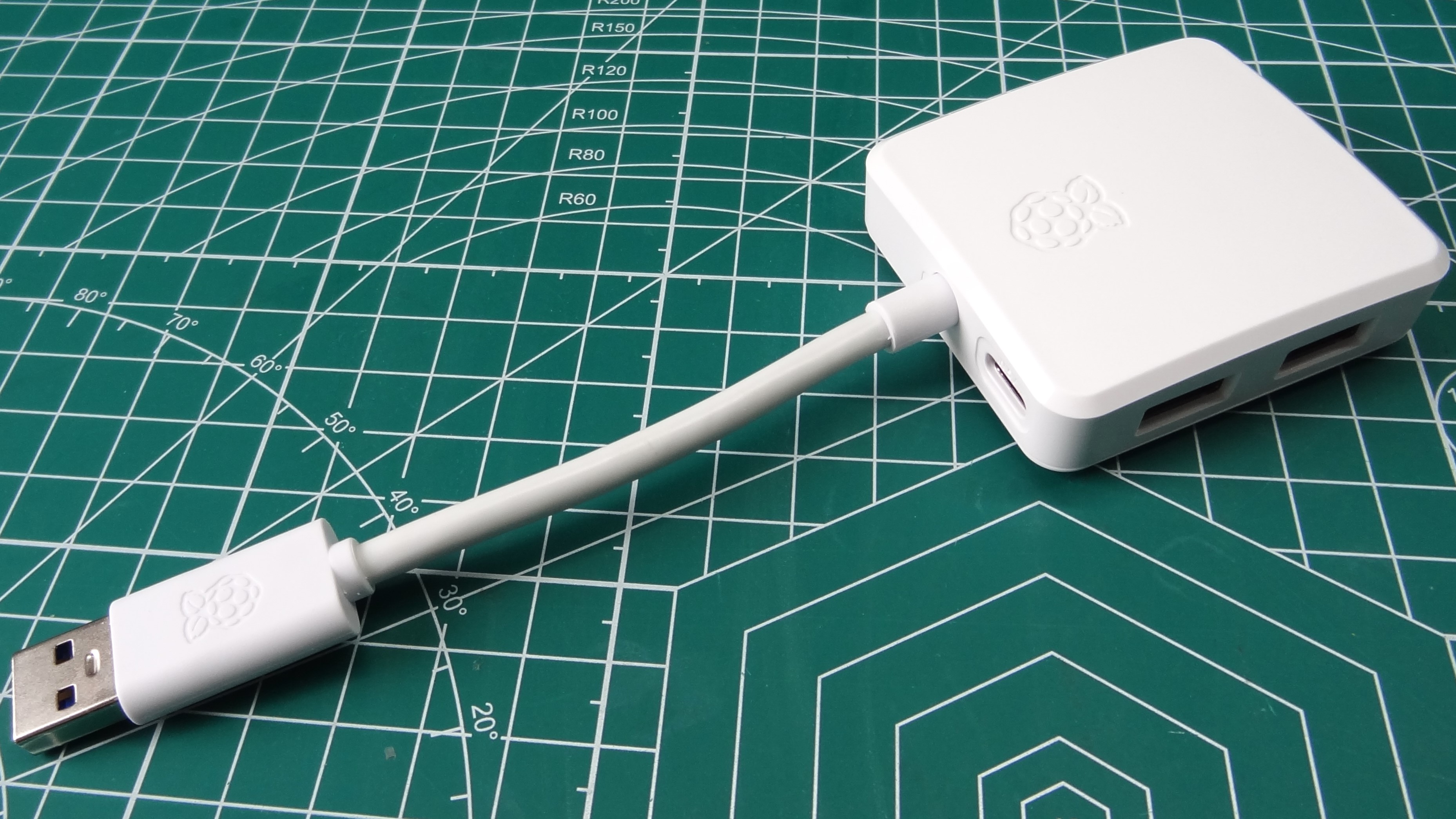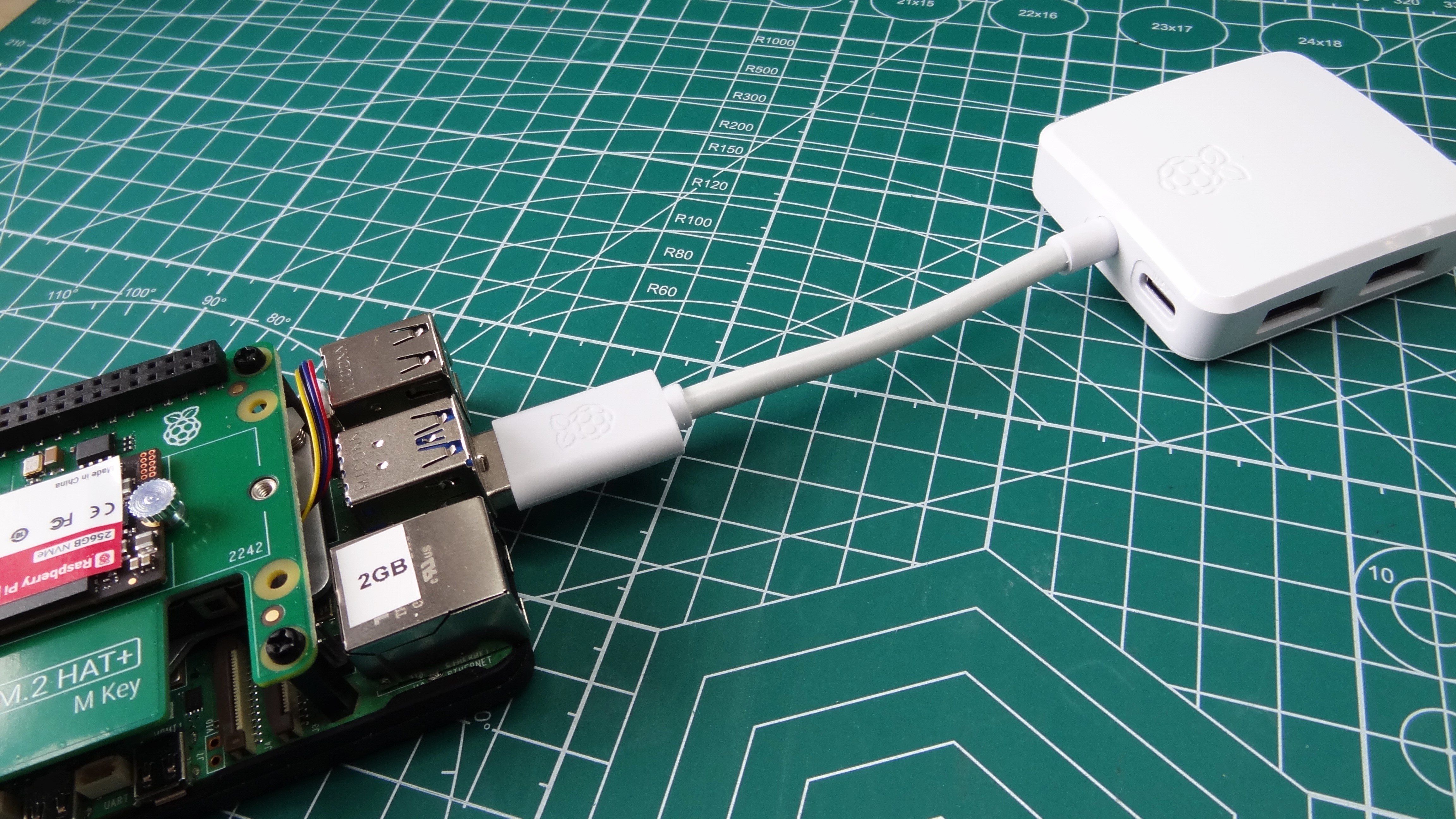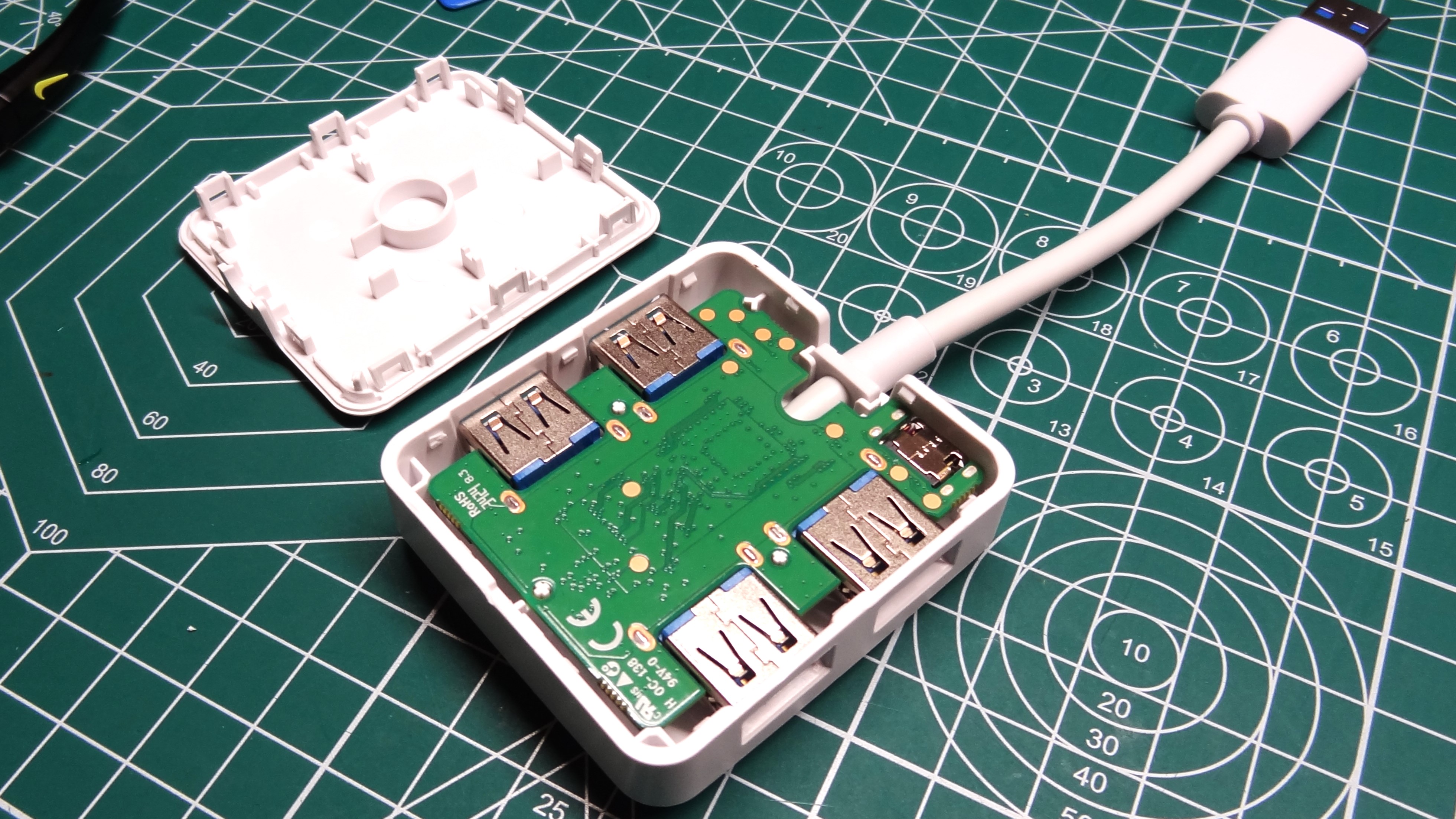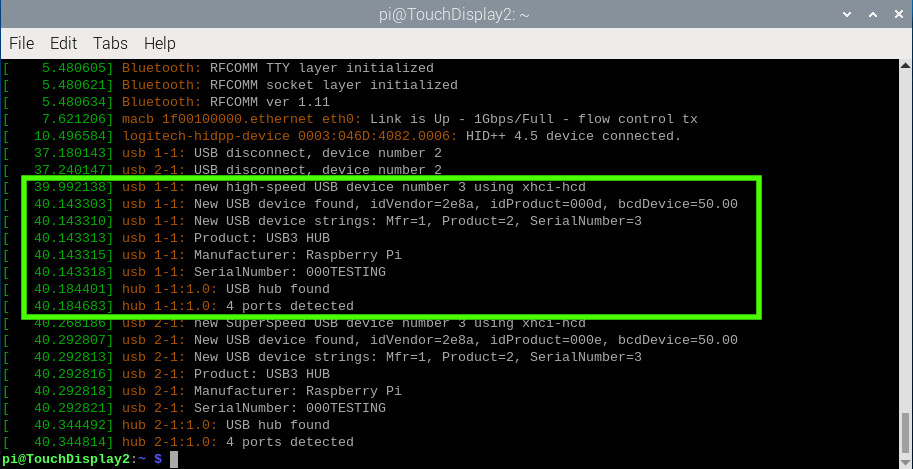Raspberry Pi announce $12 USB 3 hub to add more ports to your Pi
The hub of your next project?

The Raspberry Pi B+ introduced four USB ports back in 2014 (previous models only had one or two ports), but it wasn’t until the Raspberry Pi 4 that we saw USB 3 enter the mix. On the flagship Raspberry Pi 5, and the previous Pi 4 we get two USB 2 ports, and two USB 3. But what if we want just a few more USB ports? Raspberry Pi has today announced its latest product, a $12 (£10) Raspberry Pi USB 3 Hub, which converts one USB 3 port to four, and provides an external power input for power-hungry devices.
We’ve got one on the bench, but this is not a review, more of a hands-on. So let's see what it can do.
Raspberry Pi USB 3 Hub Technical Specifications
| USB Ports | One upstream USB 3 Type A (8CM cable) |
| Row 1 - Cell 0 | Four downstream USB 3 Type A ports |
| Row 2 - Cell 0 | Ports are backwards compatible with USB 2 and USB 1 |
| Data Transfer | Up to 5 Gbps for USB 3 |
| Power | Powered via Raspberry Pi, optional 5V 3A USB C input for high-power downstream peripherals |
| Dimensions | 175 x 52.4 x 18mm (Including USB Cable) |
| Row 6 - Cell 0 | 57.4 x 52.4 x 18mm (Hub only) |
Using the Raspberry Pi USB 3 Hub




As you can probably guess, using the hub is simply a matter of plugging it in, and then connecting your devices. It just works and I ran a few basic tests to see how it performed. The tests revolved around copying a 6.2GB Ubuntu 24.04.1 ISO image to and from a USB device connected to the hub.
The main USB device is a USB 3 to NVMe adapter, and the drive is a 1TB WD_Black SN850X. This ensures that the drive is not the bottleneck. I copied to and from WD_Black SN850X, and the Raspberry Pi 5 was running from the new Raspberry Pi branded NVMe SSD running at Gen 3 speeds. Basically, everything was running at the best possible speed. I used rsync to show the progress of the file transfer between drives.
| Header Cell - Column 0 | Speed in MB/s | Time (s) to Copy 6.2GB |
|---|---|---|
| Copy from USB to Raspberry Pi SSD | 268.8 | 22 |
| Copy from Raspberry Pi SSD to USB | 232.17 | 25 |
| Copy from Raspberry Pi SSD to USB with external power | 278.44 | 21 |
As you can see, the USB 3 interface is certainly fast enough for most projects. It's not PCIe Gen 3 840MB/s that we enjoy with SSDs on the Raspberry Pi, but 232 to 278 MB/s is plenty fast for most applications. As you can see in the table, the write speed when copying from the Raspberry Pi SSD to the SN850X increased by 10 MB/s when an external 5V power source was supplied, leading me to think that the SN850X may have needed a little extra juice to get the most from it. If you plan to use higher-power devices, then the 5V 3A (15W max) power input will ensure that any hungry downstream devices are well fed.



After taking my photos, I wondered what was inside the case. So, armed with pry tools and spudgers (and a little heat from the hot air rework soldering station) I gently opened the case. Inside, it is not a generic, off-the-shelf USB 3 hub. It is a custom Raspberry Pi designed PCB, with the Infineon CYUSB3304-68LTXC USB 5Gbps hub controller at its heart. I was looking for some custom Raspberry Pi silicon, maybe an RP2040 or RP2350 thrown in for hacks? Alas it was not meant to be.
Running sudo dmesg in a terminal, I could see the board details. A high-speed USB device, made by Raspberry Pi with the unusual serial number of 000TESTING.
Get Tom's Hardware's best news and in-depth reviews, straight to your inbox.
Who is the Raspberry Pi USB 3 Hub for?
The simple answer, anyone who needs more USB ports. The hub is a little bulky, but not obscene. The $12 price tag is also not bad, but you can get similar for around $10 on Amazon.
Would I go out and buy one? Probably not, but I already have a plethora of USB 3 hubs at my disposal. If I needed a USB 3 hub for my Raspberry Pi, then sure, I would pick one up. If I wanted to complete my Raspberry Pi USB device collection (USB keyboard and mouse) then $12 isn’t a great deal to spend for what is a pleasantly designed, and very usable hub. As ever with Raspberry Pi products, the unit will remain in production for a good few years, January 2030 according to the product brief.
You may not need one right now, but when you do need extra USB 3 ports on your Raspberry Pi, and you like the Raspberry Pi design aesthetic, then look no further.
The Raspberry Pi USB 3 hub is available from official Raspberry Pi resellers, priced at $12 (£10).

Les Pounder is an associate editor at Tom's Hardware. He is a creative technologist and for seven years has created projects to educate and inspire minds both young and old. He has worked with the Raspberry Pi Foundation to write and deliver their teacher training program "Picademy".
-
Nikolay Mihaylov The next Pi should have all USB ports be USB 3. Maybe even 10Gbps ones. After all, you can always use USB3 port as USB 2. And if you need to use a hub, it better be for the USB 2 devices, not for the more demanding USB 3.Reply -
Garden-Gnome ReplyAdmin said:Raspberry Pi’s latest accessory is a $12 USB 3 hub which matches the Raspberry Pi aesthetic and provides decent performance on the Raspberry Pi 5.
Raspberry Pi announce $12 USB 3 hub to add more ports to your Pi : Read more
I have just got one.
Pro:
4x USB 3 ports
USB C port for additional power
Subtle Pi branding
Has a solid feeling construction
Con:
No type C ports for data
Cable is quite stiff
Made in China

